Schooner Virginia
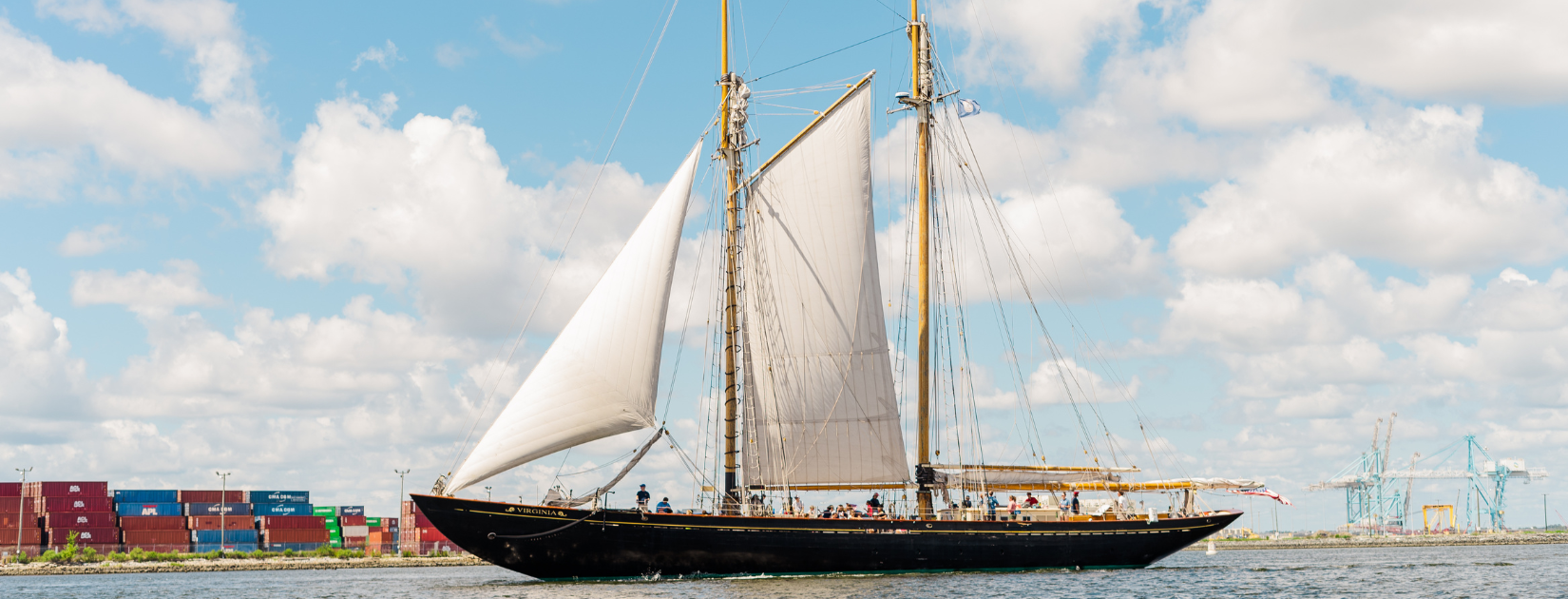
The Schooner Virginia, docked along the Elizabeth River at Nauticus, is a reproduction of the last all sail vessel built for the Virginia Pilot Association. The original ship sailed for the pilots from 1917-1926, training apprentice pilots in seamanship and navigation.
The Schooner Virginia serves the Nauticus Foundation as a vital education platform to engage the Hampton Roads community with a focus on delivering transformative maritime and hands on learning to students of all backgrounds and ages, museum visitors and the general public. The Schooner Virginia’s programming emphasizes STEM education, maritime history, tall ship training, workforce development and the conservation of our local waterways.
She participates in major events such as the Norfolk Harborfest, and the Great Chesapeake Bay. Schooner Race, as well as in many community service projects assisting in safety-at-sea seminars and with local maritime-focused nonprofit organizations.
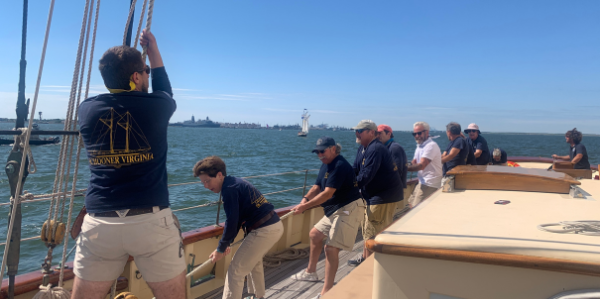
Schooner Virginia
Upcoming Events
The Schooner participates in major events/races, hosts public sails, and volunteer work days. Join us at an upcoming event!
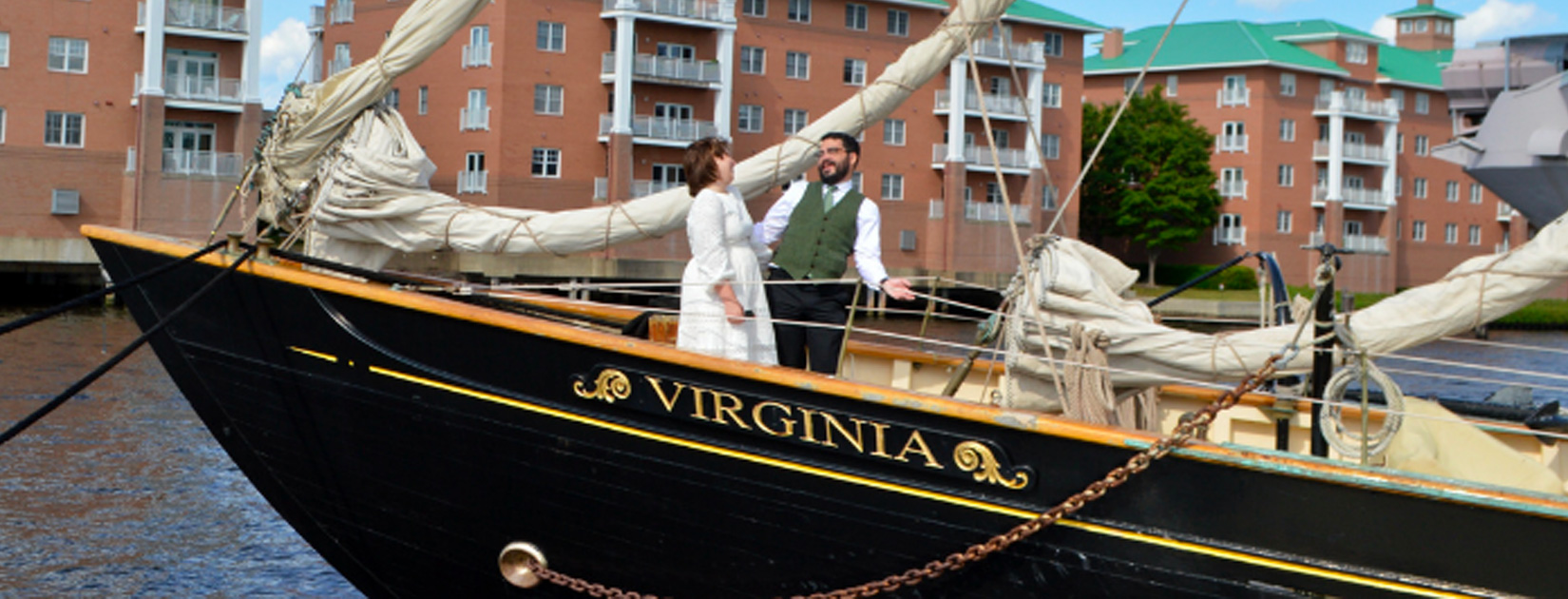
SChooner Virginia
Charters and Private Events
The Schooner is available to rent for corporate charters, team building and weddings and private receptions.
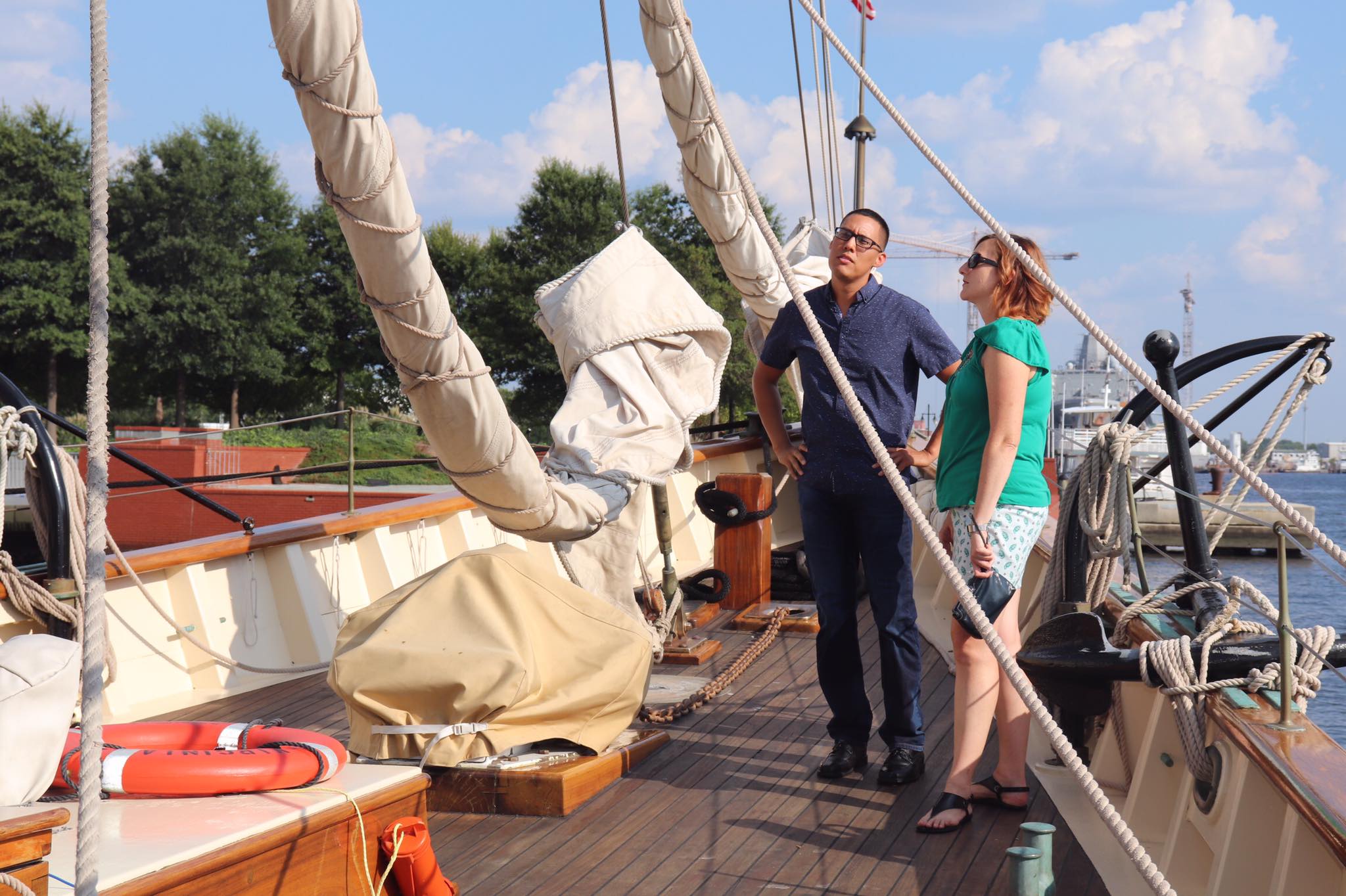
Schooner Virginia
Volunteer
Opportunities range from deck hands, instructors, sailing positions, maintenance and repair, and more!
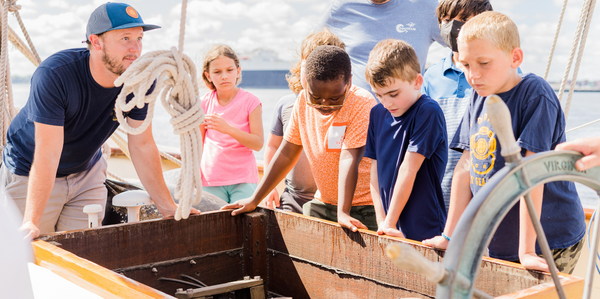
Schooner Virginia
Field Trips
Available to students of all ages, explore the Elizabeth River, learn about river conservation, and more.

Schooner Virginia
Donate
Consider a donation to support maritime education aboard the Schooner Virginia.
About the Schooner Virginia
Each year, the Schooner Virginia participates in major events such as the Norfolk Harborfest, and the Great Chesapeake Bay Schooner Race, as well as in many community service projects assisting in safety-at-sea seminars and with local maritime-focused nonprofit organizations.
Check back soon for 2024 upcoming events!
The schooner Virginia is a recreation of its namesake vessel, Virginia, the last pure sailing vessel used by the Virginia Pilot Association. The original Virginia was in service from 1917 to 1926 in the Chesapeake Bay. She served actively as a pilot vessel during World War I. This modern Virginia was commissioned by the Virginia Maritime Heritage Foundation in 2005. In 2016, she was sold to the Nauticus Foundation and is used in Nauticus’ programs as a platform for engaging STEM and maritime education.
Today’s Virginia is a wooden craft that has a length of 121 feet, a beam of 23 feet and a draft of 12 feet, three inches. She has 6,538 sq. ft. of sail.
The original Virginia was built in the A.C. Brown & Son shipyard; Tottenville, Staten Island, New York; in late 1916. At the request of the Virginia Pilot’s Association President, William Rowe Boutwell, she had been designed by the marine architects Cox & Stevens “along the same lines of an America’s Cup defender.” Although steam power had come into use by the Virginia Pilots Association twenty-five years earlier, Rowe had wanted a strictly sailing vessel for the pilot’s Association, in order to “keep the pilots sharp sailors”, and to help train apprentices.
With World War I engulfing Europe, and America about to enter the fray, the Virginia’s first role was transferring pilots between convoy ships anchored in Hampton Roads. She worked inside of the anti-submarine nets, maneuvering under sail and using the current to position her self close enough to use a rowing boat to transfer pilots. As the war continued, the number of convoys moving through Hampton Roads increased. It was at this time that the schooner Virginia would display her qualities as a sailor and pilot vessel.
At one point towards the end of the war, the two steam vessels operated at the mouth of the Chesapeake Bay by the Virginia and Maryland Pilots both left station and returned to Norfolk at about the same time. This left the Virginia alone for the better part of two days and nights, transferring pilots by sail and oar between the ships of multiple convoys. Upon leaving the pilot station at Cape Henry for a re-supply run into Norfolk, she passed Old Point Comfort only an hour later. This was a run of 15.3 miles, in only one hour!
Following restocking with food and water at her berth on the Eastern Branch of the Elizabeth River, the Virginia waited until a fair breeze provided her with the means for maneuvering back out to the pilot station. With pilot “Scobie” Guy in command, the crew tacked down the river. By this point, she was heeled so far over that her 108ft main mast would not clear the small opening in the BerkleyBridge. At just the right moment, Scobie had the crew ease the sheets, Virginia stood up and shot through the opened bridge, filled again, and continued her romp out the river!
After World War I ended, good sailors became more costly. In 1919, twin 75 horse power diesel engines were installed in the Virginia. This required the shortening of the fore boom to allow for a stack forward of the main mast. New davits were also fitted, although the surf boat at Cape Henry was still used as the primary means of transferring supplies and mail from the shore to the schooner. During the 1920’s, the Virginia Pilots Association was tangled in a political struggle with Governor Westmoreland Davis, who was running for re-election. In response to the political pressure, the pilots began hosting parties aboard the schooner to drum up support for the VPA. On one occasion, the Virginia was at anchor near Hampton Bar. An afternoon thunderstorm approached, and the schooner began to drag her anchor. The crew slacked out the spare anchor, but she continued to drag. In desperation, the crew dove below, unshipped the cast-iron stove, struggled topsides and bent it to a hawser. After dropping this third “anchor”, the schooner checked her dragging. As the squall passed, the crew hauled back all three “anchors”, sailed off the anchor and deposited their guests safely ashore.
In 1926, the Virginia finally left active service at the Cape Henry pilot station. The VPA sold the schooner Virginia to Mr. Walter K. Queen in 1939. He registered her in Boston, and Virginiastayed in those waters through World War II, until she was again sold. William H. Hoeffer (owner of the famous Gloucester fishing schooner Gertrude L. Thebaud) bought the Virginia and she was then taken to Cuba for refitting. She was employed in carrying cargo from Miami to the islands, when on her fifth trip, she was wrecked on a reef in Cuba. Her crew of seven men all escaped, but the ship was a total loss.